Published on: August 15th, 2017
Last updated: May 30th, 2024
The best time to visit France depends on whether you want a city, country, coastal or alpine holiday.
You might assume that the peak summer months of July and August are best due to the more desirable weather. However, these months are surprisingly quiet in many areas, as many French people holiday abroad.
In fact, it's so common that they even have corresponding expressions: "juilletiste" for someone who takes their holiday in July, or "aoutien" for someone who jets off in August.

When is the Best Time to Visit Paris?
Paris is famously at its most beautiful in the months of May and June as the trees begin to blossom, bringing the iconic rose colour and an air of romance to the city. The balmy temperatures, crisp blue skies and lengthening days make this the perfect time of year to stroll down the Boulevard Saint Michel, get lost in the medieval streets of the Marais or enjoy an aperitif by the side of the Seine.
Whilst you can certainly visit the city during the summer months of July and August to enjoy its wealth of art, culture, beauty and culinary expertise, we would recommend avoiding these months if you can. Tourism is at its peak meaning long queues and dense crowds, and many places close down for the “grandes vacances” (the long summer vacation) when most native Parisians leave the city.

Lesser renowned but equally stunning (with the added bonus of low-season prices) are the quieter autumn months of September and October. The weather is still pleasant (around 14-20°C), the golden autumn leaves give the city a burnished glow, and locals have returned from their own holidays, making for wonderful strolls and people-watching along the Seine.
Take advantage of the lack of queues to see the Mona Lisa at the Louvre, climb Montmartre to visit the Sacré Coeur and enjoy the unparalleled views across Paris, shop for Parisian chic on the Champs Elysées, and warm up with the famously indulgent “chocolat chaud” at Angelina’s.
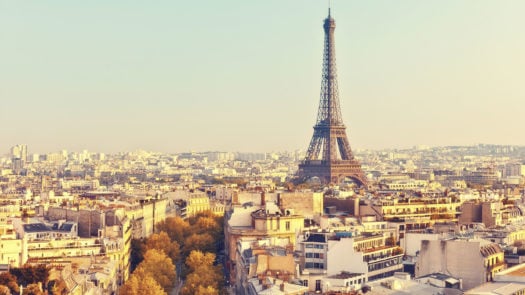

When is the Best Time to Visit the North of France?
The sheer variety that you will find in France’s historic northern regions makes it a fascinating and action-packed destination at any time of year, although (as with most parts of France) it’s best to avoid the peak months of July and August when the locals go on holiday and most places shut down for the summer. The climate here is more akin to the south of England, i.e. temperamental, experiencing rain year-round and even in the height of summer.

The winters are chilly and there is plenty of rain in the autumn months. But don’t let the weather put you off. A mixture of stunning coastal towns preserved in time, medieval cities with gothic cathedrals, imposing cliffs and gentle rolling hills, golden with crops in spring and summer (perfect for cycling or walking), northern France is a smorgasbord of culture, history and natural beauty.
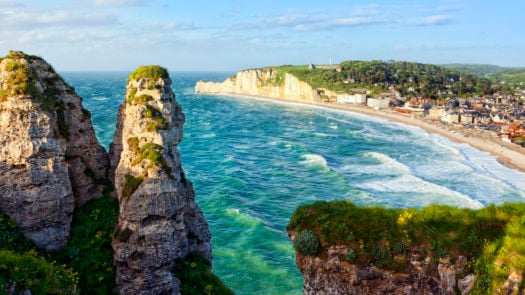

When is the Best Time to Visit Bordeaux?
Contrary to the large majority of the country, the east of France is the perfect area to head for around July and August. Make like the natives and head to the Île de Ré for some island sun and sea, La Rochelle for medieval beauty and Bordeaux for elegance, wine and trendy contemporary culture.

A mix of weather, the east coast of France tends to be warmer that the northern regions in summer, and the seas are calmer than the unpredictable Atlantic. This coast is more likely to experience warm, torrential downpours in the afternoons during summer.


When is the Best Time to Visit the South of France?
The best time to visit the South of France is between May and October which bring long, bright, and sunny days. This is the perfect season to enjoy what the region is best known for – turquoise coastlines, Medieval villages, and rustic beach shacks.
Over the years, Southern France has claimed a reputation for its laidback, douce vie sensibility. With something for everyone, the ideal time to visit depends on what you’re looking for. The destination is especially popular among surf enthusiasts and sunbath lovers on a quest for the best stretch of sandy beaches.
The months of July and August especially seem to draw visitors to areas like Nice, Marseille and St. Tropez. During this period, you can expect very hot temperatures, often over 30°C or 90°F.
This is perfect if you’re looking for a sun-drenched holiday, as well as being a great time for festivals and fairs.
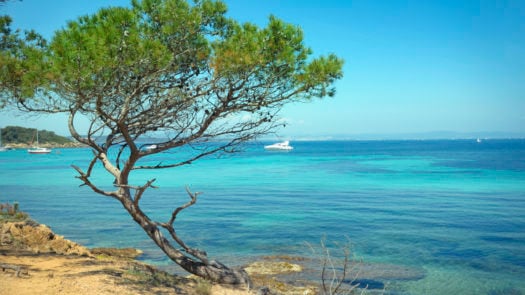
Due to their more inland position, Lyon and Toulouse can be unbearably hot in the summer, without the reprieve of the sea breezes in more coastal locations. Make for these areas, as well as the bucolic paradise of the Dordogne, in the shoulder months of May/June and September/October, when the weather is a little bit cooler (albeit somewhat unpredictable).
For lavender picking in Provence, July is the best month to go as the crops are at their thickest – lavender season only runs from June to August.
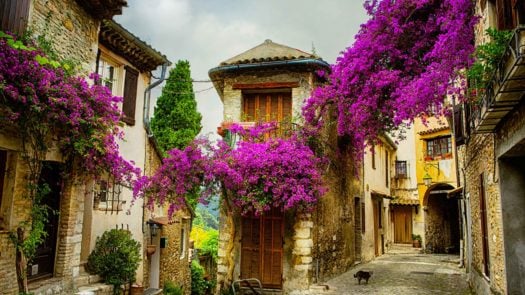

When is the Best Time to Visit the French Alps?
Whilst the rest of the country slows down in terms of tourism, travel to the Alps undoubtedly increases in the winter. Globally renowned for its fantastic skiing and winter sports activities, the Alps are at their busiest from December through to April- ski season. If you are visiting France for skiing, take into consideration the school holidays for French and British children as the slopes are extremely busy.

Out of season, June is best for hiking, as the Alpine wildflowers are in bloom and, on lower ground, the temperatures hover at a pleasant 20°C. However, if you are planning on serious hikes, at a higher altitude temperatures can still fall to under 10°C so pack warm clothes!


Where to Go in France Each Month
Beat the January blues with some sun, snow and free-flowing endorphins: this is a glorious month for skiing in the French Alps. Head to the timelessly stylish Chamonix or Val d'Isère for the perfect winter holiday (and some après-ski glamour). Alternatively, you can make like the fashionable set of the 1920s and head to the sparkling French Riviera to escape the winter cold.

Whilst February is still a brilliant month to hit the slopes, it also welcomes St Valentine's Day, undoubtedly the most romantic day of the year. What better excuse to escape to the city of love itself, Paris? Or for a more unusual escape, you can even visit the eponymous village of St Valentin in the Loire Valley, which holds an annual festival where red hearts and romance abound, residents deck their homes in blooms, and the village's "lovers' garden" opens its gates.

Easter is a big deal in France, and the build up to the big day is magical all over the country. For an extra fairy-tale touch, head to the chocolate-box-pretty Alsacian town of Colmar to catch its stunning floral displays, candy coloured houses, winding canals, delicious cuisine and world-famous wines ahead of the crowds.

There are few places with more bucolic charm than Burgundy, with its tumbling hilltop villages, striking roman ruins, grandiose renaissance chateaux and sumptuous vineyards. Head there in April to catch the delicate flavour of seasonal white asparagus on menus across the region. If sport and adventure are more your thing, head to Berck-sur-Mer in the Pas-de-Calais region of northern France for the International Kite Festival, Europe's largest kite-flying festival with participants from all over the world and of all ages.

The world-famous, glamorous film festival is held every May in the beautiful location of Cannes on the Côte d’Azur, albeit in a slightly less appealing building. For celebrity-spotting, this is a good place to be. It's also a lovely time of year to visit as the weather starts to warm up.
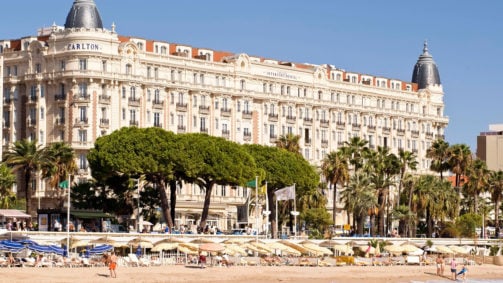
As more clement weather begins to grace the northern coast of France, head to historic Normandy to see the famous Bayeux tapestry, visit the picturesque medieval island monastery of Mont Saint-Michel, and feast on delicious local seafood and cider in charming coastal fishing towns like Honfleur. Alternatively, the clay courts of the Roland Garros are one of the top Grand Slam locations on every tennis lover's bucket list, and now is the perfect time to tie in a trip to the French Open with a springtime city break in Paris.

Home to some of France's most iconic and delectable culinary creations (think Quiche Lorraine, among other things), the Lorraine region also boasts the famous gothic cathedral of St Etienne in Metz, the Vosges mountains and, if you go there in July, the world's largest hot air balloon festival in Chambley-Bussières. Spread over 10 days, this beautiful display is the world’s largest hot air balloon festival. With around 3000 pilots, it’s a magnificent sight to witness these colourful giants float through the sky. Alternatively, July is of course the month of the Tour de France, the famous international cycling race that covres around 3,600km (2,200 miles) in three weeks. Check the route and plan a break where you can see these incredible athletes steam past: a sight not to be missed.

Fair weather sailors will find perfect weather in the world-class waters of Brittany around this time of year. Whilst you're there, don't forget to stop off at the picturesque island fortress of St Malo to sample the local Breton delicacies such as crêpes, kouign-amanns and cider.

A lovely inland city in the north of France, Lille is close to the Belgian border and thus specialises in hearty Belgian treats such as waffles, mussels and French fries. Head there in September to catch the Grande Braderie de Lille, a famous 48-hour street market dating back to the 12th Century.

Foodies and oenophiles listen up: October is harvest time across the country, meaning festivals, tastings, celebrations, and the perfect time for a wine tour in the Loire Valley. Or, if you want to take advantage of low season prices and combine your wine trip with a city break, check out the annual Fête des Vendanges in Montmartre, when the winding streets around the Sacré Coeur are brimming with stalls selling local wines and delicacies such as tartiflette.

If you're the type who gets excited about Christmas a few months early, hot-foot it to Strasbourg at the end of November to catch the start of its world famous Christmas market, with 300 chalets spread over 11 locations. The town itself is a delight, with its franco-germanic melting pot of medieval fairy-tale houses and elegant French mansions.

The beautiful medieval and renaissance architecture of Lyon is at its most striking in December with the Fête des Lumières. In the Christmas season, this pretty Festival of Lights is a welcome display of warmth in the darker winter season. The four-day festival dates back to 1643, when legend has it that the Virgin Mary saved Lyon from the plague. Candles line every house in Lyon and there is a larger candlelit procession through the town.

Our Top Example Trips
Whatever you want from your trip to France, our team of expert travel designers are ready to help.
























